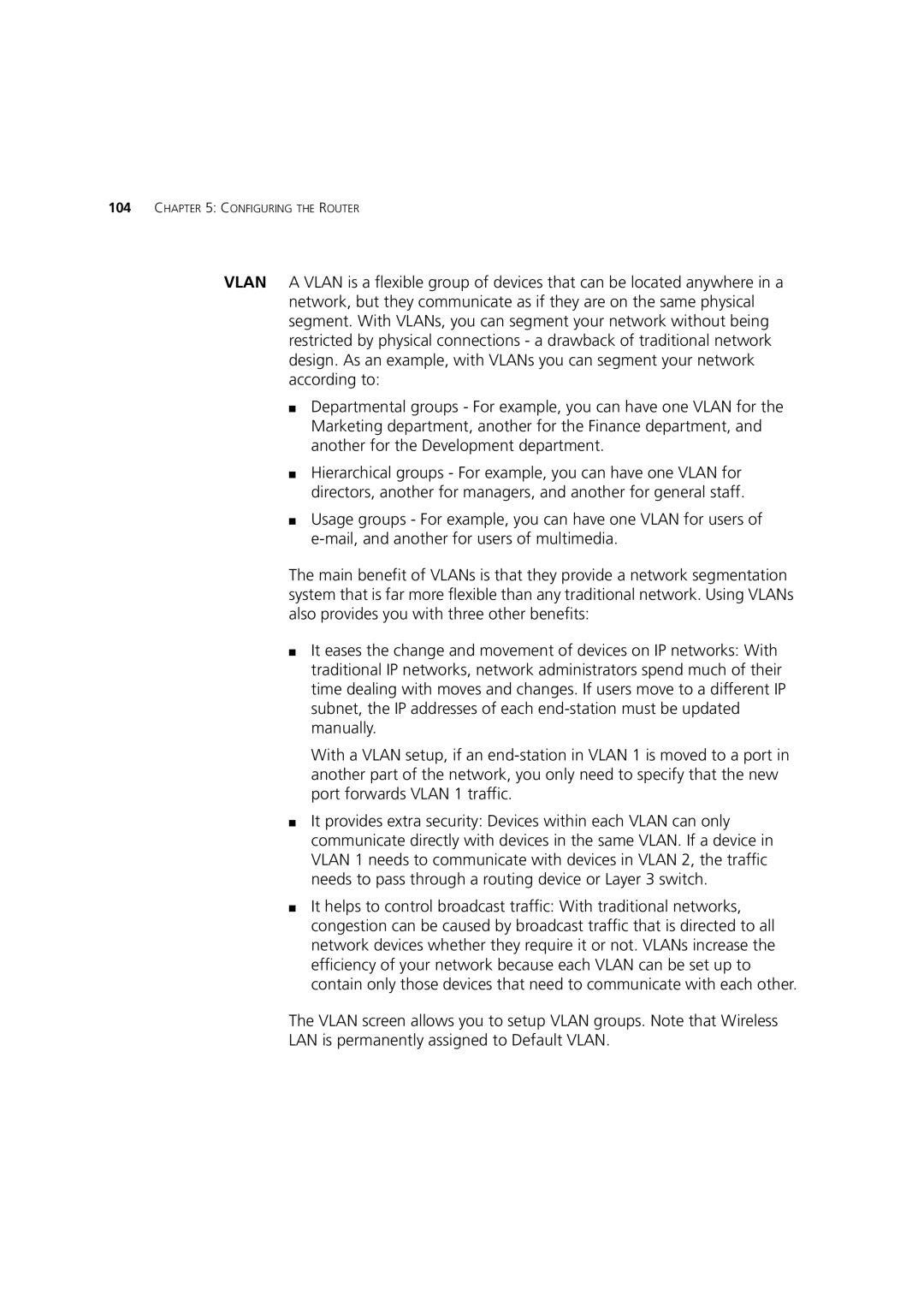104CHAPTER 5: CONFIGURING THE ROUTER
VLAN A VLAN is a flexible group of devices that can be located anywhere in a network, but they communicate as if they are on the same physical segment. With VLANs, you can segment your network without being restricted by physical connections - a drawback of traditional network design. As an example, with VLANs you can segment your network according to:
■Departmental groups - For example, you can have one VLAN for the Marketing department, another for the Finance department, and another for the Development department.
■Hierarchical groups - For example, you can have one VLAN for directors, another for managers, and another for general staff.
■Usage groups - For example, you can have one VLAN for users of
The main benefit of VLANs is that they provide a network segmentation system that is far more flexible than any traditional network. Using VLANs also provides you with three other benefits:
■It eases the change and movement of devices on IP networks: With traditional IP networks, network administrators spend much of their time dealing with moves and changes. If users move to a different IP subnet, the IP addresses of each
With a VLAN setup, if an
■It provides extra security: Devices within each VLAN can only communicate directly with devices in the same VLAN. If a device in VLAN 1 needs to communicate with devices in VLAN 2, the traffic needs to pass through a routing device or Layer 3 switch.
■It helps to control broadcast traffic: With traditional networks, congestion can be caused by broadcast traffic that is directed to all network devices whether they require it or not. VLANs increase the efficiency of your network because each VLAN can be set up to contain only those devices that need to communicate with each other.
The VLAN screen allows you to setup VLAN groups. Note that Wireless
LAN is permanently assigned to Default VLAN.
